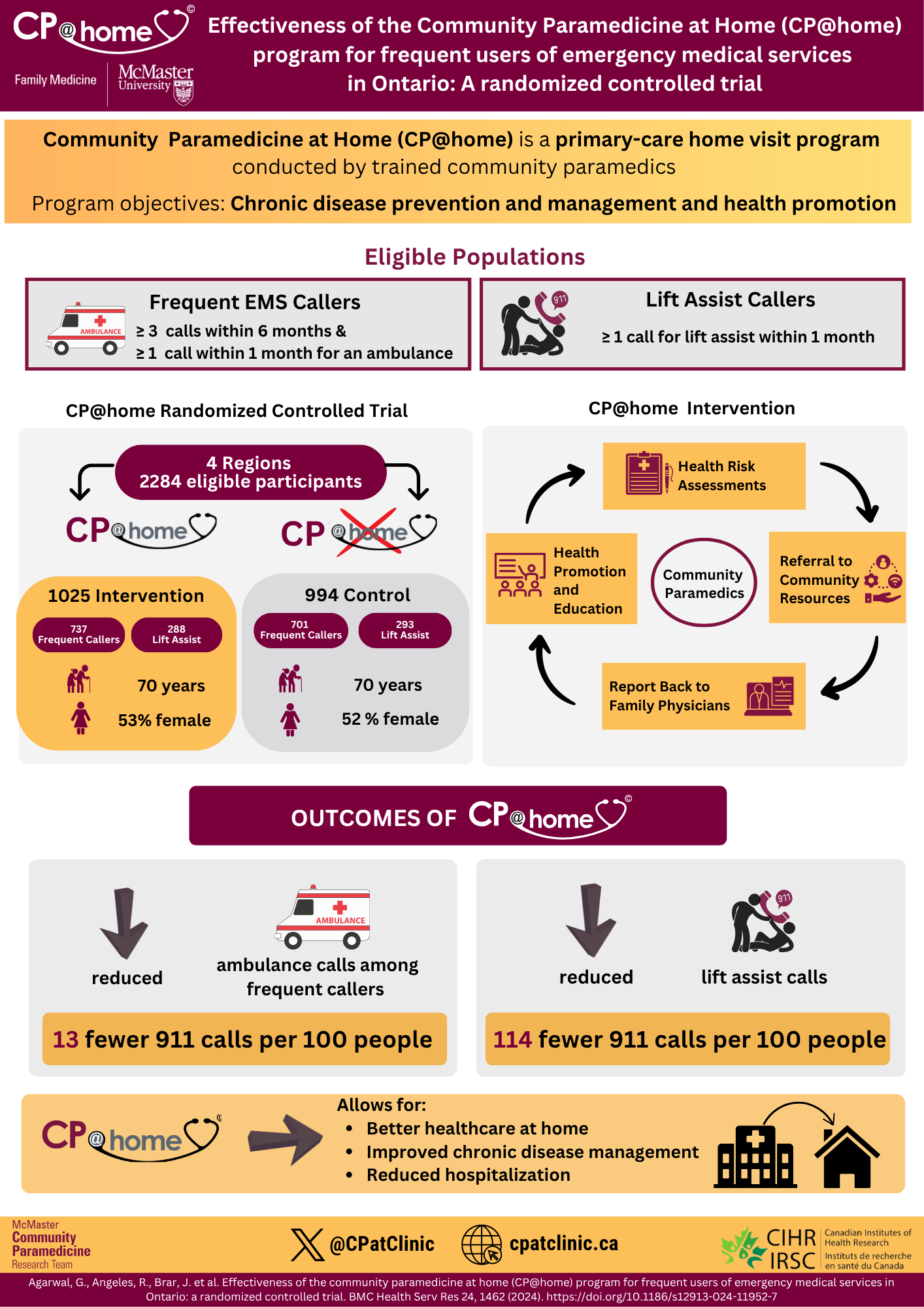
This infographic is titled “Effectiveness of the Community Paramedicine at Home (CP@home) program for frequent users of emergency medical services in Ontario: A randomized controlled trial”. On the left side of the title, the infographic is branded with the logos of the CP@home program and the McMaster University Department of Family Medicine.
At the top of the infographic is a quick description of the CP@home program. Community Paramedicine at Home (CP@home) is a primary-care home visit program conducted by trained community paramedics. The program objectives include chronic disease prevention and management and health promotion.
The next section describes eligible populations. On the left side are Frequent EMS callers which were defined as individuals who had 3 or more calls within 6 months and 1 or more call(s) within 1 month for an ambulance. On the right side are Lift Assist callers who were defined as individuals who called 1 or more times for lift assist within 1 month.
The next section describes the randomized controlled trial (RCT) and the CP@home intervention. On the left side, the RCT is depicted as a flowchart with a population from 4 regions and 2284 eligible participants at the top of the flowchart. 1025 individuals received the CP@home intervention and 994 individuals did not receive the intervention and thus served as the control group. In the intervention group, 737 were frequent callers and 288 were lift assist callers. The average age was 70 years old and 53% of the intervention participants were female. On the other hand, there were 994 individuals in the control group, with 701 frequent callers and 293 lift assist callers. The average age in the control group was also 70 years and 52% of the individuals in this group were female. On the right side of this section, there is a cycle diagram which describes the CP@home intervention. The components of this diagram include the following: health risk assessments, referral to community resources, report back to family physicians, and health promotion and education, with community paramedics at the centre.
The next section of the infographic describes the outcomes of the CP@home program. There were reduced ambulance calls among frequent callers, specifically 13 fewer 911 calls per 100 people. There were also 114 fewer 911 calls per 100 people for lift assists. Overall, the CP@home program allows for better healthcare at home, improved chronic disease management, and reduced hospitalization.
At the bottom of the infographic, there is a logo for the McMaster Community Paramedicine Research Team, a Twitter (X) handle for @CPatClinic, the website link for cpatclinic.ca and a logo for the Canadian Institutes of Health Research (CIHR). The citation for the study is also included below.


